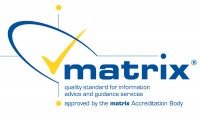Dyslexia Awareness

Dyslexia affects around 10% of the population - that’s over 6.7 million unique stories across the UK alone. And while every experience with dyslexia is different, what connects them all is the need for greater understanding, support, and early intervention.
At PeoplePlus, we’re proud to champion the voices of the dyslexic community by sharing key messages that can help drive positive change:
- Every story is different – Dyslexia doesn’t look the same for everyone. From school to the workplace, we must celebrate the diversity of lived experiences and support people in ways that work for them.
- A strong start matters – Early identification and support can empower individuals with dyslexia to reach their full potential. Knowing what’s needed from the beginning can open the door to greater confidence and success.
- It’s never too late to turn the page – With the right help and guidance, anyone can begin a new chapter. Whether it’s in learning, life, or work, support is out there — and it can make all the difference.
Read on to explore how we support dyslexic individuals and how small adjustments can make a big impact in education, employment, and beyond.
Key facts about Dyslexia
- 1 in 10 people have Dyslexia.
- 3.3 million adults in the UK workplace are Dyslexia and most are undiagnosed.
- Prisoners are 5 times more likely to be dyslexic than the population as a whole.
What is Dyslexia?
Dyslexia is a lifelong, genetic, neurological Specific Learning Difficulty (SpLD) that primarily affects the skills involved in accurate and fluent word reading and spelling.
Dyslexia is not linked to intelligence; it occurs regardless of gender, age, ethnicity and in all walks of life. Its impact ranges from mild to severe. It is often a hidden disability. Challenges with reading, writing and spelling may not be visible, as many adults have developed good coping strategies. But tasks that require these skills, will require more time and effort than might be expected, and the impact this has on an individual can often go unseen.
Dyslexia affects everyone differently, and every individual will have their own strengths and challenges.
Supporting Dyslexia
Getting the right support in place is key for someone with Dyslexia.
A range of support strategies can be implemented to help someone access the work or learning environment. These include
- Provide hand-outs rather than expecting learners to take notes.
- Present information in small chunks and review key points.
- Allow time to process information, both written and verbal before responding.
- Give the spelling of new or difficult vocabulary and provide a key word list.
- Use rounded fonts and those which allow for space between letters such as Arial, Calibri, Century Gothic, Comic Sans, Tahoma, Verdana or Trebuchet.
- Use a minimum of 12 point font (some people may prefer 14 or larger) with a line spacing of 1.5 to 2 times.
- Use dark coloured text on a light (non-white) background. Avoid light text on a dark background.
- Use bold type or highlight the main points of the text. Avoid underlining and italics to highlight text.
In the Justice sector, we support a number of learners who declare they have Dyslexia as part of the routine neurodiversity screening process. Timely support and understanding have made a huge difference to so many prisoners across our 22 prison education teams.
Through my role on the Equality, Diversity, and Inclusion (EDI) committee I want to ensure that those with neurodiverse needs and disabilities including Dyslexia are well catered for, respected and valued within the working environment and have fair and equitable access.








